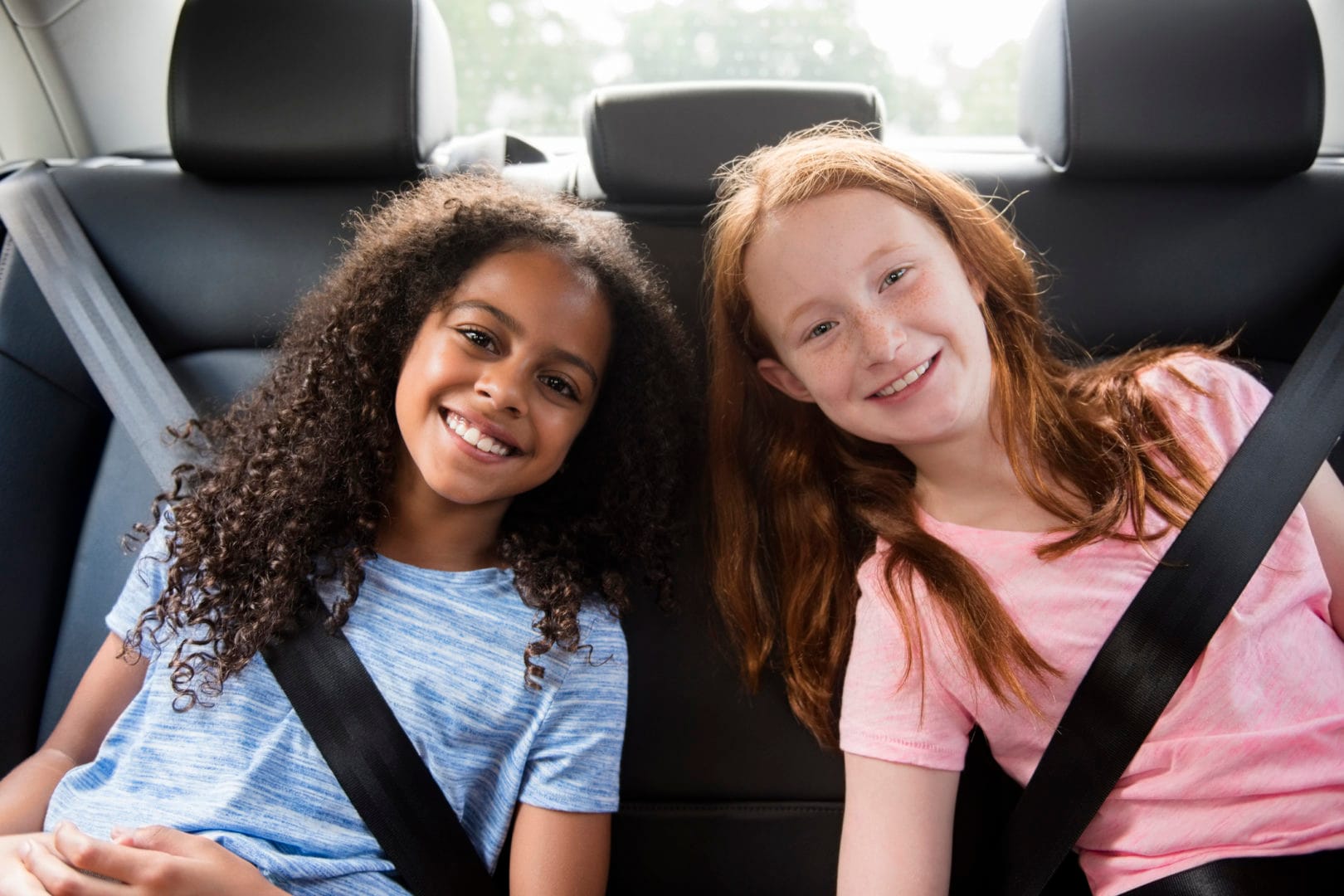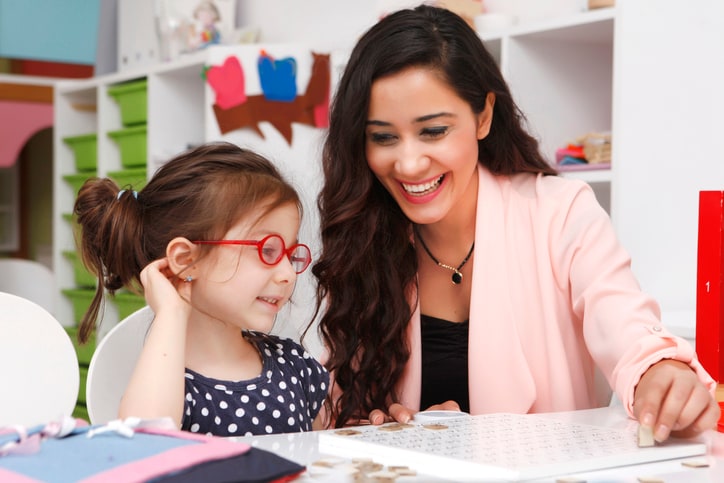Any parent of a toddler will tell you that a car ride with their little one is rarely a quiet one. But
fast forward a few years, and parents are often shocked to find that their once-chatty kid is suddenly a quiet tween who can’t seem to manage more than a “fine” or an “I don’t know” when asked a question on the way home from school. Add in a few other kids from your neighborhood carpool, and you’ll find that your frustration levels may quickly multiply.
It can feel like an impossible task to try to get a group of kids engaged in conversation, but that doesn’t mean you shouldn’t try. We talked to experts and parents to get their best advice on how to set up a carpool environment that makes kids feel like they can open up, and to get suggestions for questions you should ask kids to get them all happily chatting away during the ride.
First, some general carpool tips:
Make your car a device-free zone
Yes, we can see your kids’ eye-rolls from here, but this is an important rule to set if you want kids to engage. Bonnie Compton, a child therapist and parent coach, says this is her No. 1 tip.
“The car is actually the best place to have conversations with older kids, because they don’t have to make eye contact and, most importantly, they can’t walk away or get distracted,” Compton says. “Having their devices in their hands is an instant distraction, and creating a device-free zone will eliminate that powerful desire to distract themselves from having to talk.”
Though you might be dreading the reaction, simply let the kids know that, in your car, devices are not allowed. Set an example by making sure that your own phone is tucked away in your bag or jacket pocket and that it stays there throughout the entire ride.
Ask open-ended questions that require more than a yes or no answer
Jennifer Zumbiel, creator of Togather Moments and mom of four, suggests putting together a list of open-ended questions ahead of time that are designed to elicit a more lengthy response from the kids.
“‘Tell me about’ is a great phrase that you can use to turn any question into an open-ended one,” Zumbiel says. “So, instead of saying ‘How was practice?’ try asking ‘Tell me about how you helped out at practice today?’”
Zumbiel says that the more specific you can be with your questions, the better. Throwing in a name of a specific friend or referencing something specific that happened lets the kids know that you are paying attention and are interested in their responses. If the kids respond well to a certain question, follow up with a related one to keep them going.
Keep it positive and know your audience
“Don’t confuse ‘captive audience’ with a perfect chance to corner them about their school performance or lack of helping out around the house,” Zumbiel says.
If the kids in your carpool start to associate riding in your car with a general sense of negativity, they will dread getting in and will definitely clam up.
Knowing that not all of the kids in the car are in your family means you’ll want to keep the conversation light and you should stay away from heavy or extremely personal topics. You want to engage the kids in a meaningful way, but the carpool is not the place to discuss how someone is feeling about a divorce or any other serious family situation. The less pressure the kids feel while in your car, the more they will be open to conversation and sharing their thoughts with the group.
Try these 8 open-ended questions
1. What’s the best thing that happened today and what’s the worst thing that happened?
OK, technically that’s two questions, but it’s ideal to group them together. Asking them as a grouped question can make it feel more like a game and less like an interrogation. And, since the negative can often be more fun and easier for kids to talk about, grouping it with the “best part” question can help them see their day in a more positive light.
“I call this my good news/bad news question set,” says Austin, Texas, mom of three, Judy Roberts. “By now, the kids know I’m going to ask this, so they come prepared with answers and treat it like a game. It’s kind of fun because they try to make sure that none of them have the same answers and it leads to all kind of conversations and, usually, a lot of laughs.”
2. What’s the funniest thing that happened today?
If you remember anything about school, you probably remember a lot of funny and, sometimes, embarrassing things happening there. There’s no way to answer this question with a one-word answer and it can lead to an extended conversation as it gives the kids an opportunity to really test out their storytelling chops.
“I drive a group of 11-year-olds several times a week, and this is my go-to question,” says Kelly Bergsin, a Newton, Massachusetts, mom of two. “I find that middle-schoolers are the toughest kids to get talking because they’re just so self-conscious. When I ask them to tell me about something funny, there’s always at least one kid with a story and that usually leads to the other three having something to add. If I end up with a car full of giggling 11-year-olds, that’s a win!”
3. If you could leave out just one part of your day, I’m curious, what would it be?
Compton suggests this question as an ideal way to approach something potentially uncomfortable that the kids wouldn’t bring up on their own. When you ask a question like this one, you are subtly encouraging the kids to talk about something that bothered or upset them during their day. By turning it into an imaginative scenario, it reduces their anxiety around the idea that you’re asking them to talk about something that made them feel bad.
“Kids crave connection, especially from their parents,” says Compton. “But the key is to make it more about your curiosity, rather than a fact-finding mission.”
If kids feel put on the spot, they will shut down. But if you can provide them with a low-pressure way to get into the potentially uncomfortable or embarrassing moments from their day, it can make them feel a lot better and more connected.
4. Caitlyn, how are you guys doing with your mom out of town? What’s the funniest thing that’s happened without her there?
Since you’re driving a car of kids that includes some who are not your own children, it’s a good idea to figure out a way to connect with each of them. If there is something specific going on in one of their lives, try to include a question about it during the drive. Keep it positive and adjust the contents based on your relationship with the family and the child’s general level of openness.
Zumbiel stresses that a routine car ride is the perfect place to encourage meaningful conversation with the entire group of kids and says it can make a child feel more comfortable to discuss something specific to their life.
“Children are counting on us to teach them valuable conversation skills and to really take time to get to know them,” she says.
5. If you were in charge, what would you change about homework?
Compton suggests this question as a way to get kids talking about their own ideas.
“Kids want to be seen and heard, and they have a lot of great thoughts when they’re given the chance to express themselves,” she says.
Another variation would be “If you were in charge, what would you change about the school day?”
Kids spend almost their entire day at school and have a lot of opinions about what they do there and how they do it. Give them the opportunity to share their frustrations and encourage them to come up with their own proposals for how things would be run if they were the ones in charge.
6. Tell me about what you’re most looking forward to doing at home tonight?
Most kids can’t wait to finish up with school, homework and other activities so that they can relax and do something of their own choosing. Asking this question gives them the opportunity to share their interests with you and with each other and can also act as a springboard to additional conversation.
“I ask this question all the time and it always ends up with me asking even more questions,” says Roberts. “Most of the time, they end up explaining a video game to me or giving me an idea of what kids are doing on Snapchat or TikTok. I have no idea what they’re talking about half the time, but they are never shy about explaining this stuff to me and it actually gives me a better understanding of what’s going on in their lives.”
7. I noticed a new kid in school, have you had a chance to get to know him?
With tweens and teens, it’s a good idea to approach the subject of their friend groups with caution, but Compton suggests a question like this one as a way to approach it from a curiosity angle. If you’ve noticed a change in their peer group, whether it’s a new kid or something else, framing it this way will give the kids the chance to offer up what they’re comfortable with discussing. If they seem open to the conversation, ask more specific followups. For instance, if they mentioned that the new kid plays basketball, use it to move into a conversation about their favorite extracurricular activities. Again, keeping it positive and based in curiosity will keep kids talking for longer.
8. Tell me about something you did today that you’re proud of.
This one is more likely to work with elementary-school aged kids than with the older ones since tweens and teens often feel embarrassed bragging about themselves in front of their peers. For younger kids, this question can give them the opportunity to reinforce their positive feelings about themselves and share something that they feel really good about.
“I can still get away with asking this with the 11-year-olds, but it was one I absolutely loved asking when they were younger because it was always so positive,” Bergsin says. “The best part was when one of the children would remind another child of something she had done that day that she should be proud of. It also gave me the chance to really praise each of them and let them know that they should continue to do things like that.”
Experiment with variations of these questions to see what works best with the kids in your carpool. It can be challenging to get them going in the beginning, but it’s worth it.
“It may be the easier thing to just zone out and not talk,” says Zumbiel. “But if you have even just five or 10 minutes together, you have valuable and captive time to really connect.”
Read next: Carpool etiquette rules for parents






